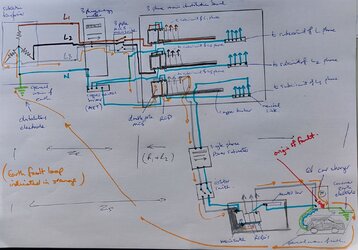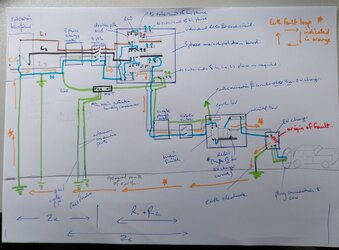- Jul 12, 2022
- 3
- 5
- 33
- If you're a qualified, trainee, or retired electrician - Which country is it that your work will be / is / was aimed at?
- United Kingdom
- What type of forum member are you?
- Trainee Electrician
Hi there, new to the forum and in final stages of completing C&G level 3; need to complete design project to complete. Am struggling to get my head around how to draw up correct circuit diagram showing EF Loop path for EV charger where initial supply is described as 'three phase TNCS' feeding to seperate dist board for single phase and TT earthing arrangement for EV charger. I can draw up the three phase supply, three phase dist board with 3 seperate busbars for each of the phase subcircuits. I can draw the connection to a seperate sub dist board for the EV charger. It's the earthing arrangement that I'm confused about; I understand I have to use an earth electrode for the EV charger so that it is isolated from anything else, I'll attach a sketch of what I've done so far. Has anyone tackled anything similar?

Last edited by a moderator:









